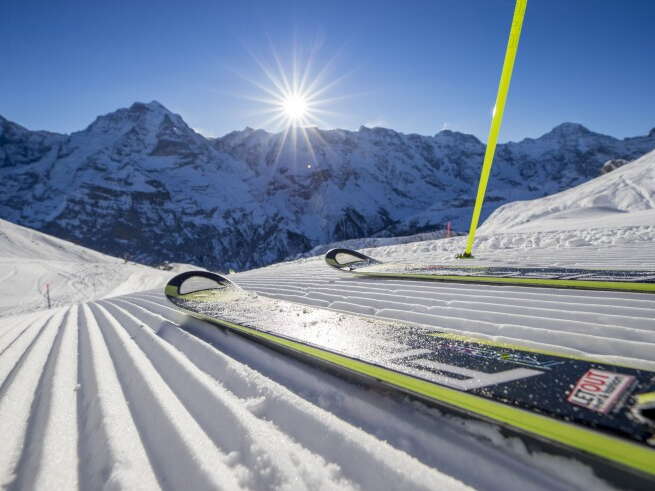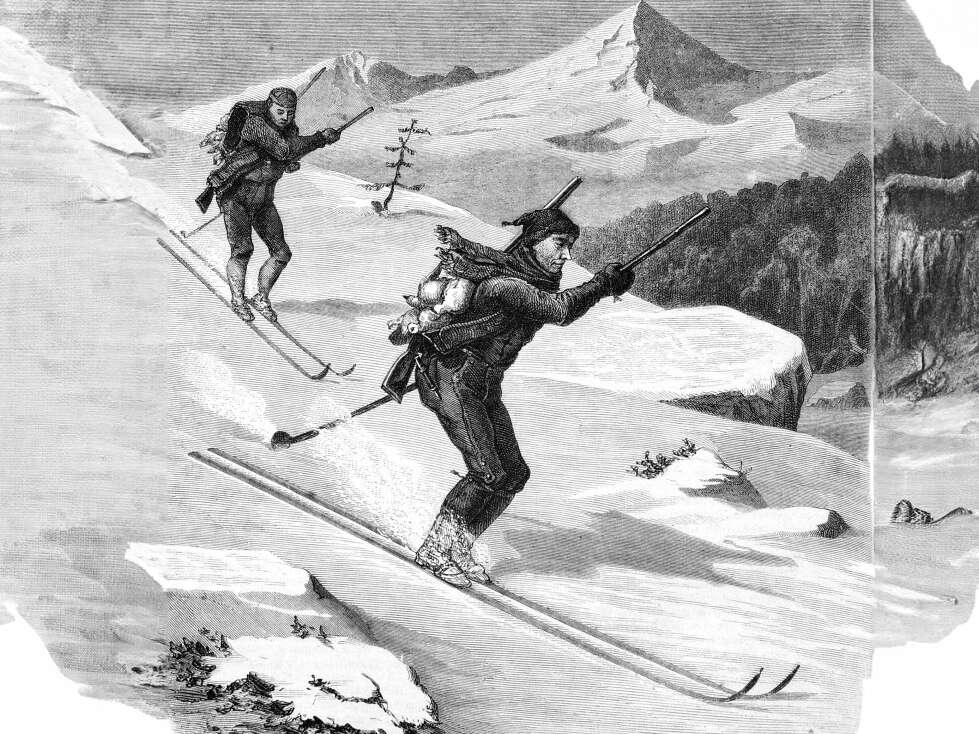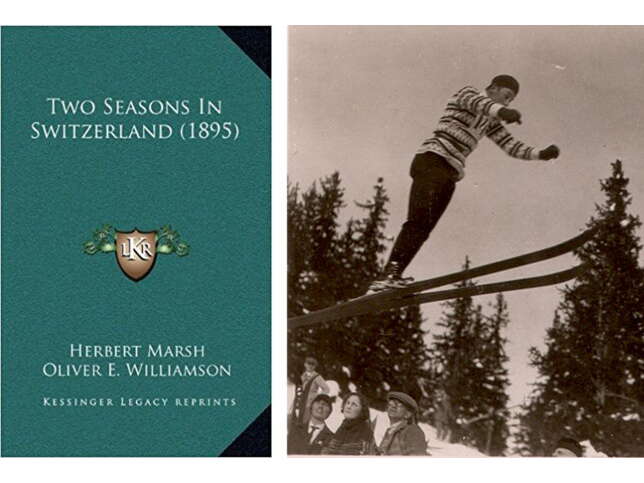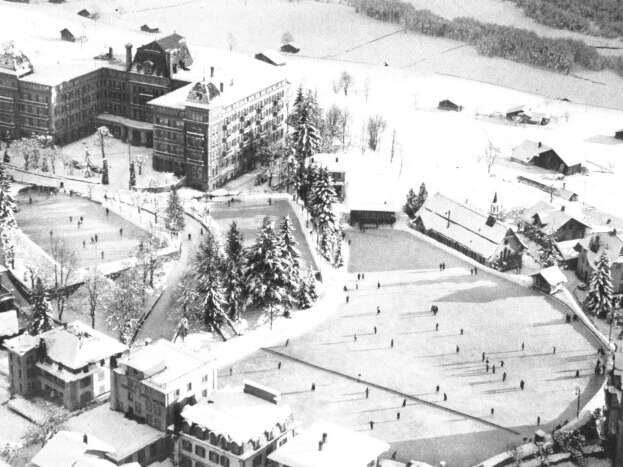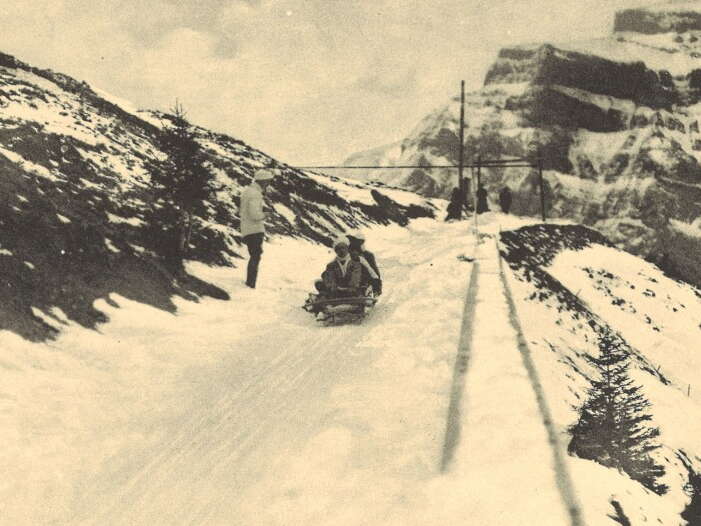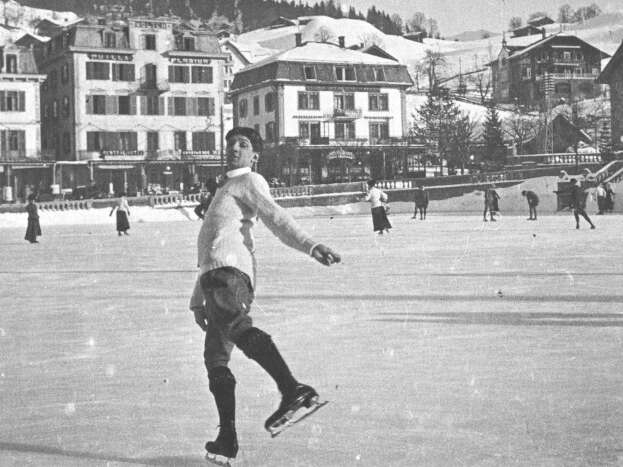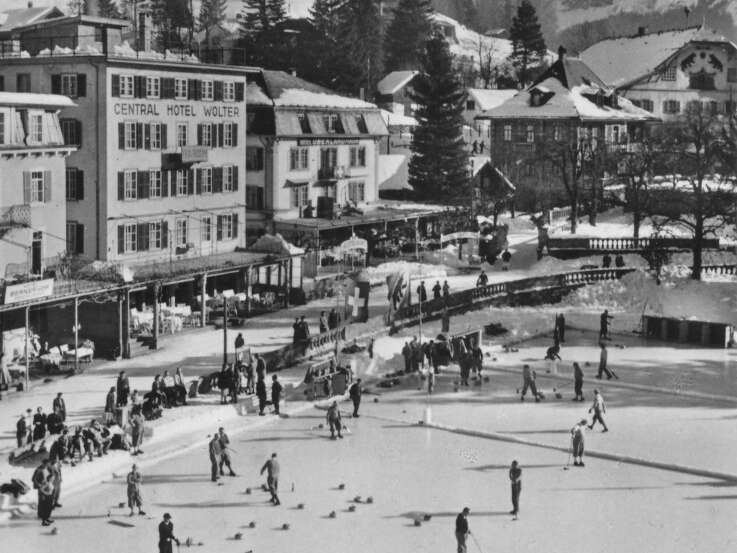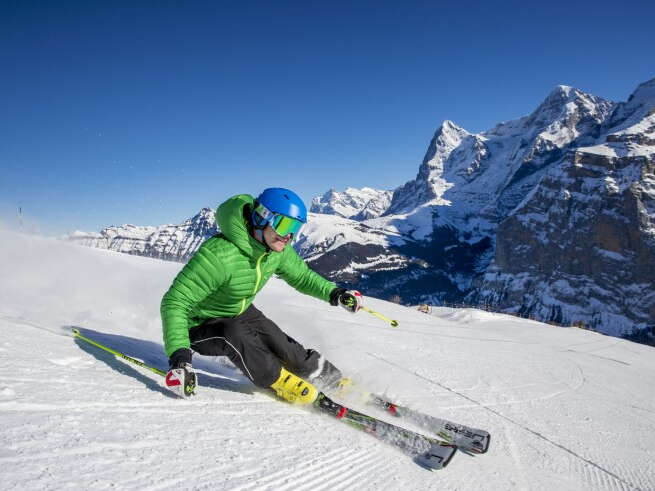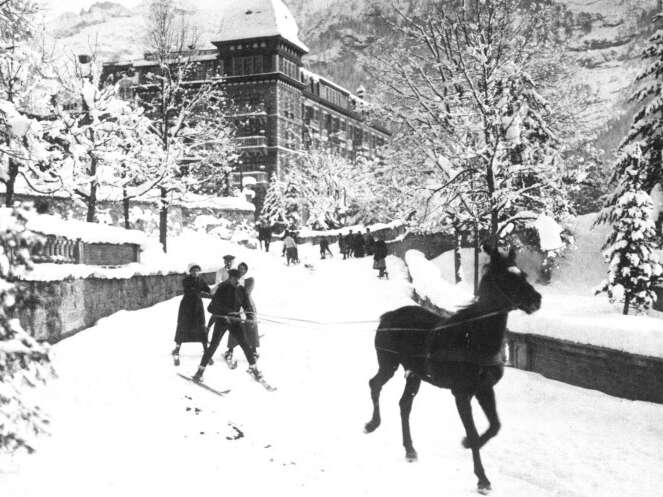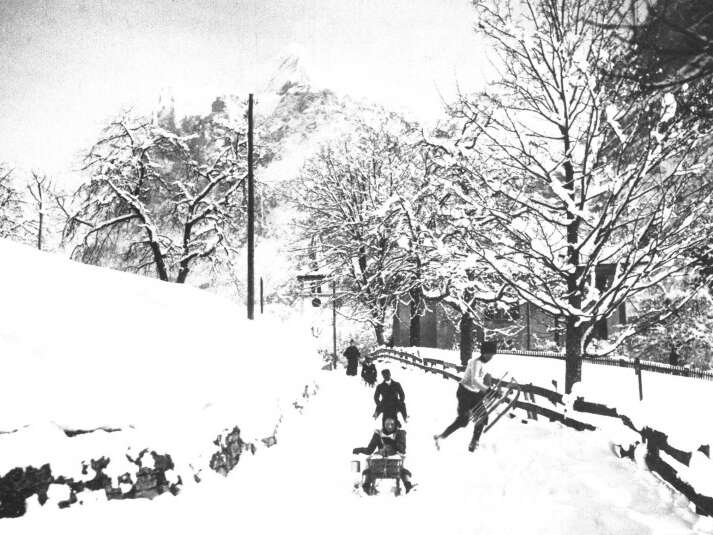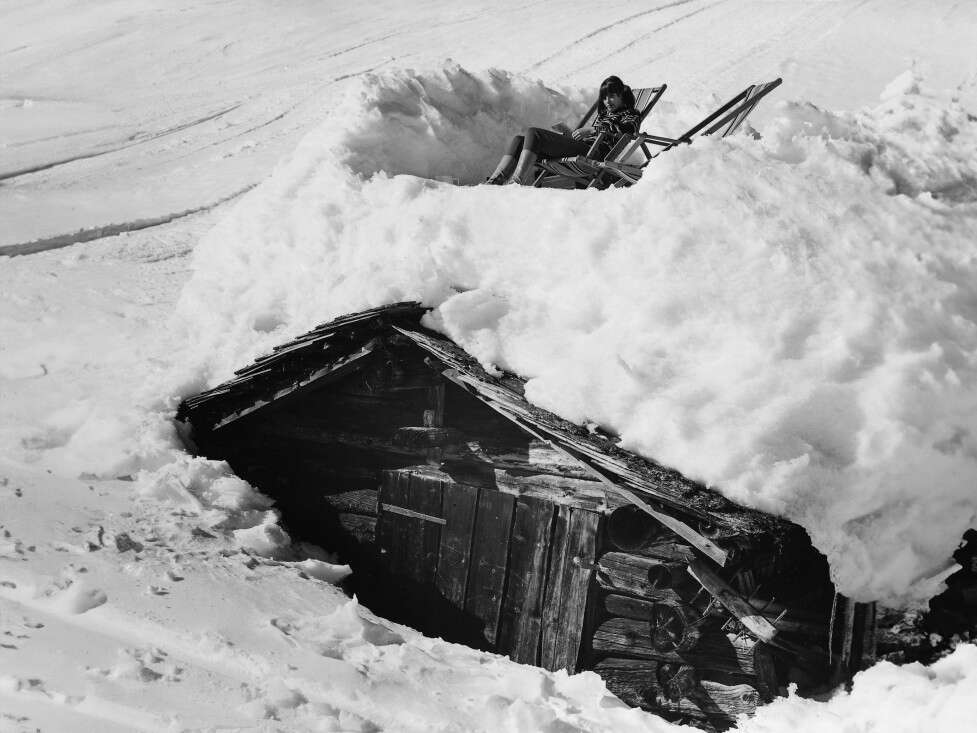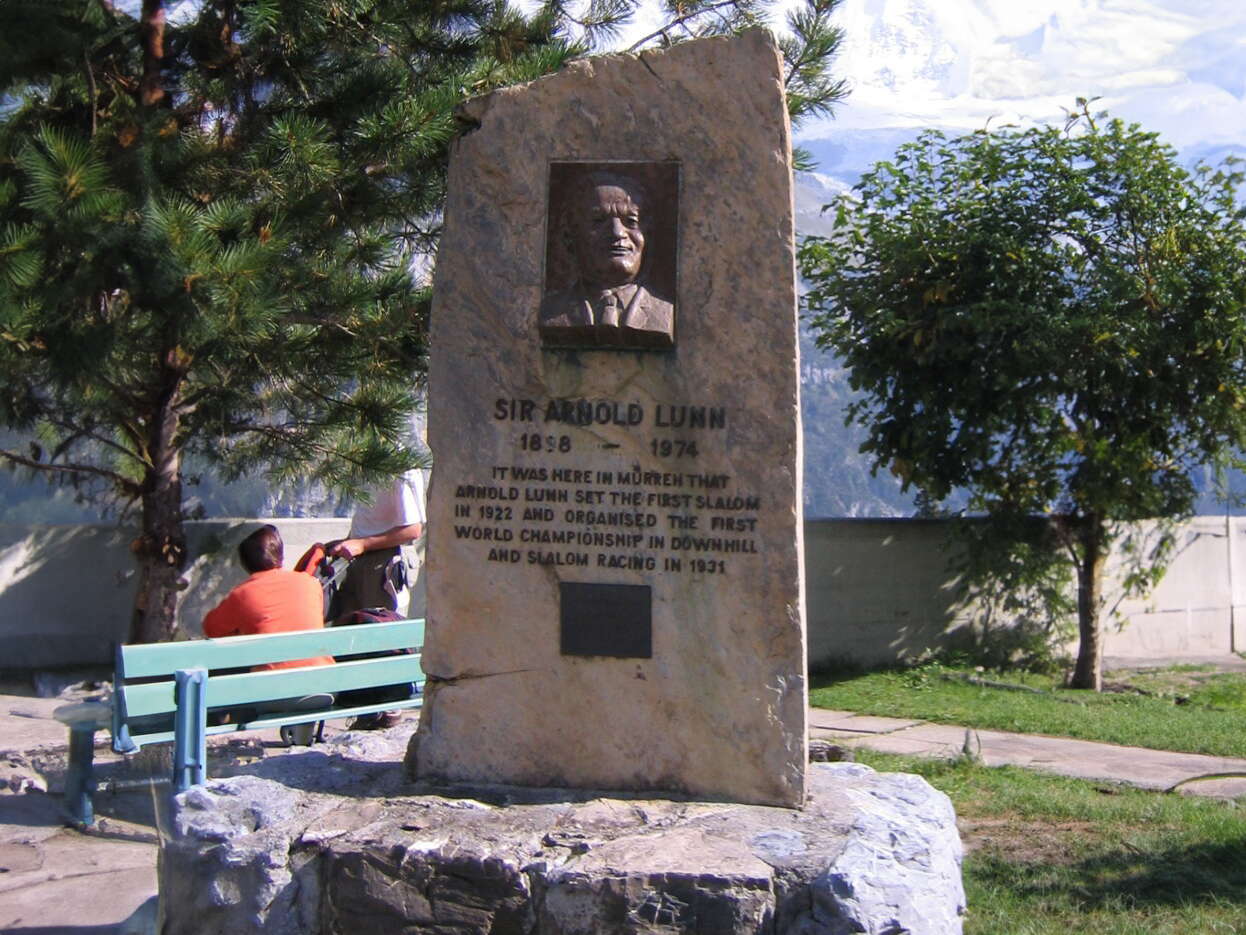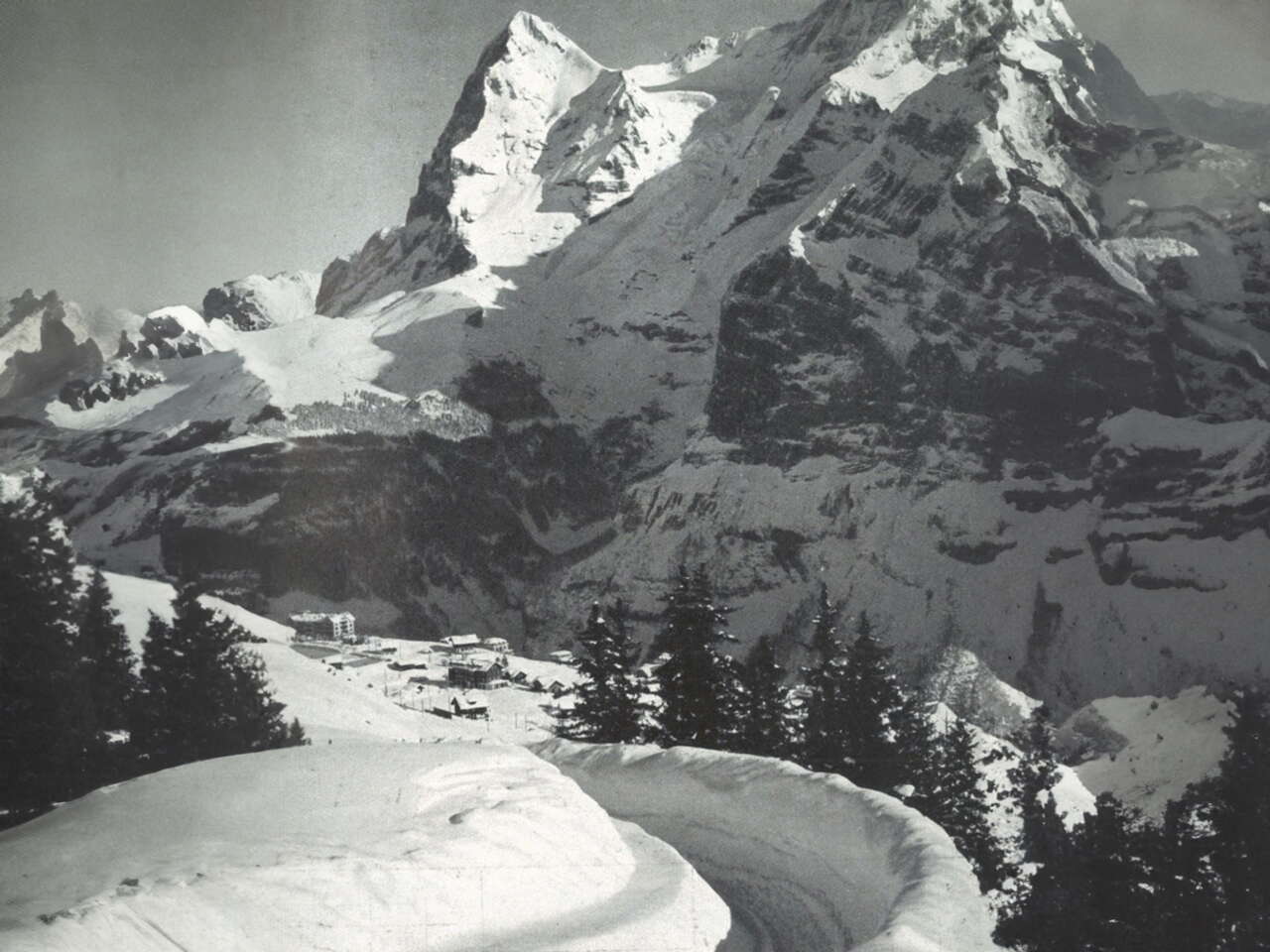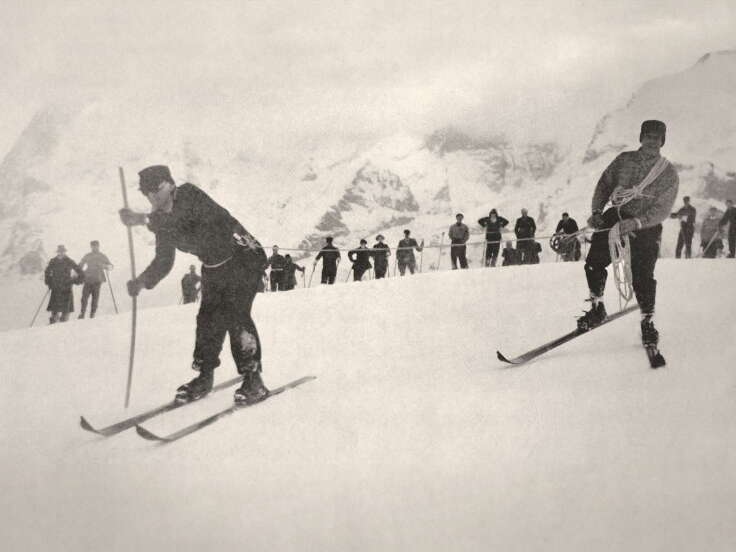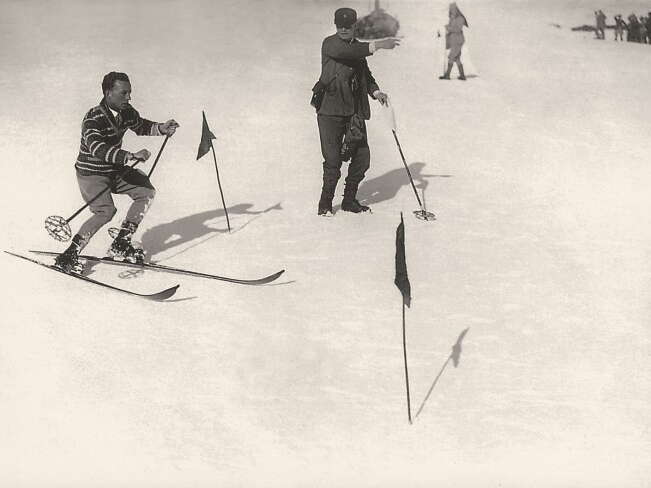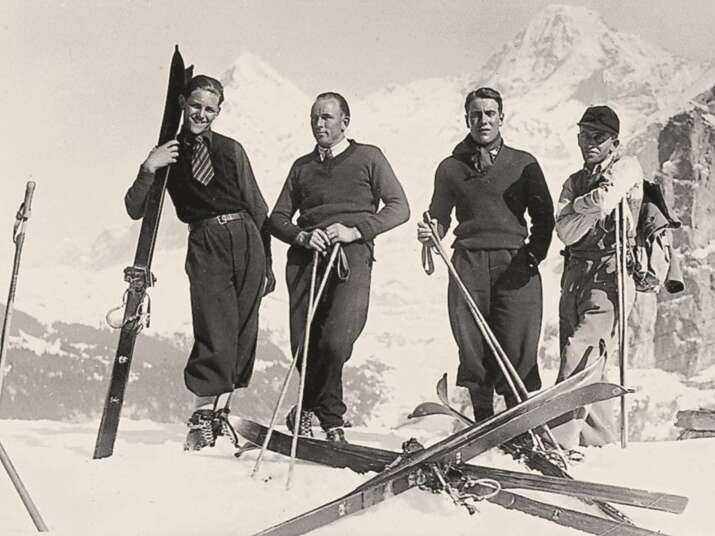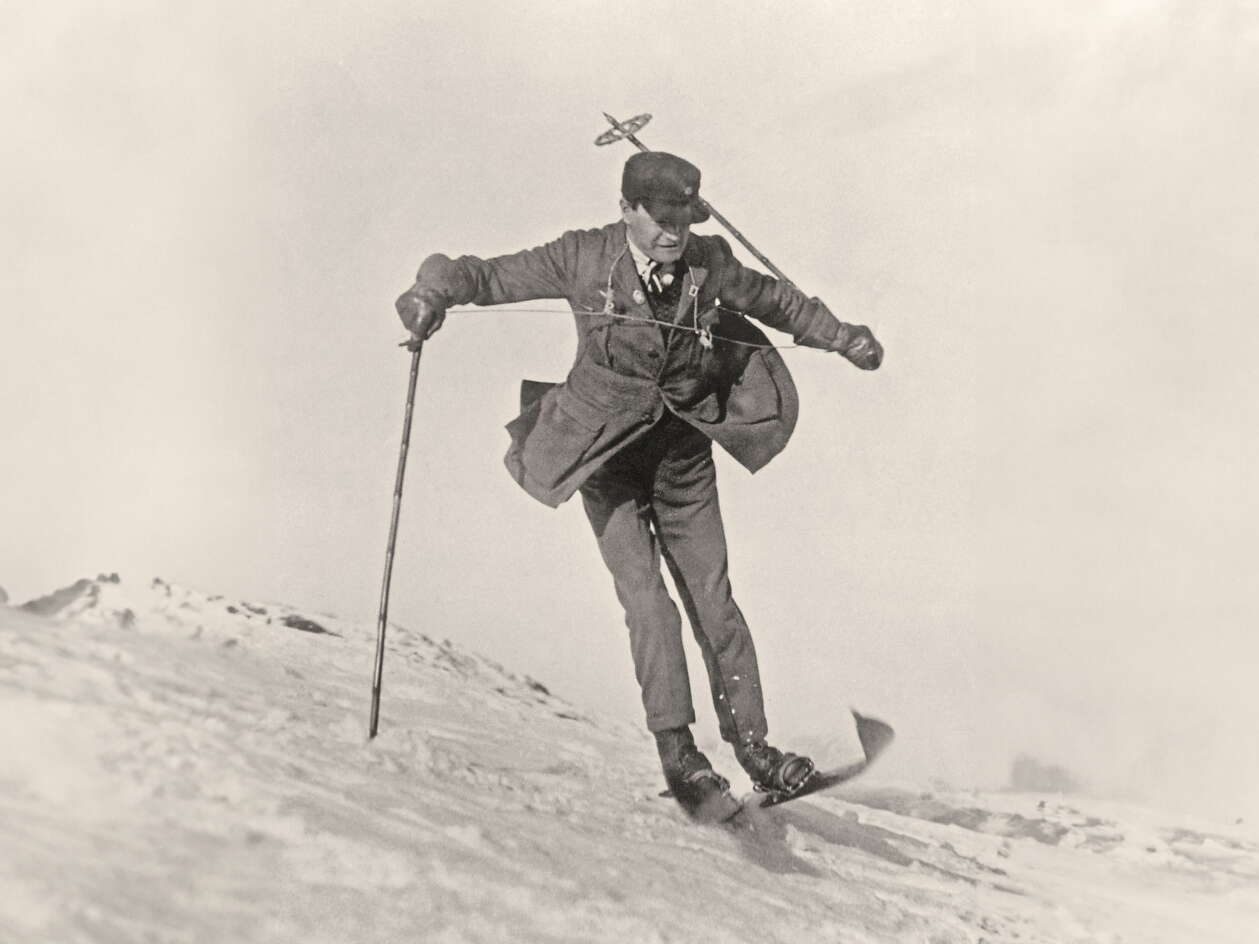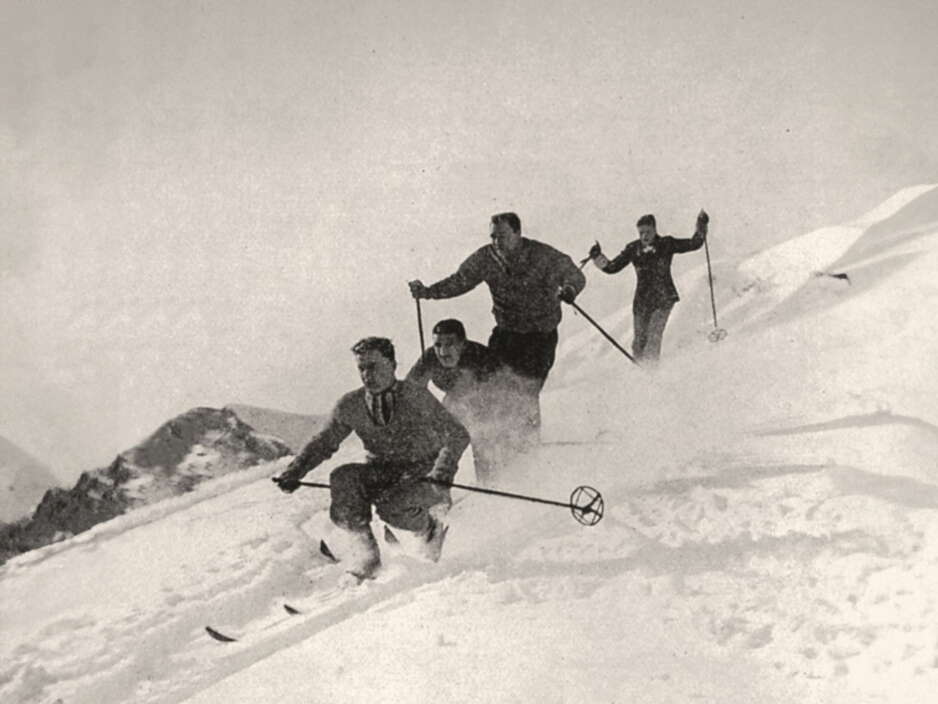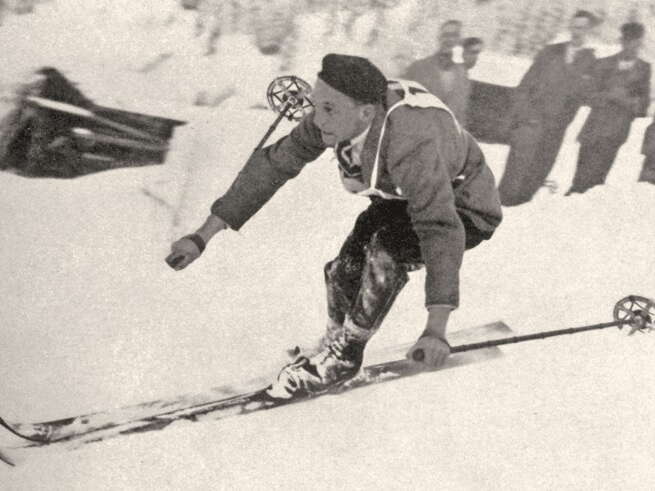History
Who invented them? The Swiss. No, unfortunately not. Let's be honest. In this case, it wasn't us. We imported the two wooden slats with bindings from the north. That's how it is. However, we learnt pretty quickly in Mürren how to handle them properly. It is therefore not surprising that Mürren is considered the "cradle of snow sports". We have the son of a British priest to thank for this, among other things.
The year is 1860
Let's turn our attention to northern Europe and our Scandinavian friends. To be more precise: to the Norwegians. They are currently inventing - drum roll - the ski. Clever guys. The invention is attributed to the village of Telemark. It's not exactly a province that everyone knows. But it must be pretty nice up there. What else could have been invented in this place? Hmm, difficult question. Maybe the Telemark ski? Jackpot.
Skiing only became established as an organised sport in Norway in the middle of the 19th century. The Old Norse word "ski" roughly means "split piece of wood".
Meanwhile in the Bernese Oberland. Something marvellous happens there. The English discover winter
In Switzerland, there is now supposed to be a second season in addition to summer. What a claim. It's called "winter". The winter mountain sun at high altitude is rumoured to be quite pleasant. And this white mass, called snow by the locals, is quite fun. And of course the fresh air and the health benefits it brings... in short: winter sports are making their way into the Oberland. No Englishman thinks of the Riviera any more.
"Two seasons in Switzerland": now that's a bold title. This book was published in London in 1895. The English still favoured the sunny Riviera in winter. But this is about to change abruptly.
The guests clearly enjoy the wintry landscape in Grindelwald. However, the new invention from Norway is still nowhere to be seen here.
The bobsleigh and horse-drawn sleigh provide even more variety.
Ice sports are flourishing. Skaters from all over the world come to our alpine villages.
Considerate Scots: they introduce the game of stones for the stolid and the aged. Curling at the foot of the Wetterhorn.
The golden key to the beauty of previously hidden winter resorts.
Surprise gift! The ski comes to the Bernese Oberland.
The Jungfrau Region lives and breathes winter sports. It's just a shame that we're still confined to this small town.
We just can't get out of our villages. But then the gift arrives from Norway. Skiing comes to our region. Everything changes. Is it magic or sorcery? It doesn't matter. The door to the vast and unspoilt landscape is opened at a stroke. A marvellous gift.
Of course, the development path from the stave with the cords to the reinforcement of the wood, the ingenious binding, the right footwear and the appropriate clothing is quite long. But we won't go into that in detail.
A lonely winter nest shunned by strangers: Mürren at the turn of the century. The first skis appear in this idyllic setting.
The director of the Hotel Des Alpes skis carefree circles in the snow. Ok, it's not really circles. He makes his first attempts at standing, walking and skiing. A nice way to pass the time. You can't miss the grins on the faces of the locals. It may look funny, but these skis are still practical for getting to the barns and stables in deep snow. The mountain guides and porters are clearly enjoying themselves.
The ski is a perfect tool - but nothing more. Nobody really thinks about winter sports and a winter season.
Then the rumour mill starts churning: elsewhere, the highest passes are crossed in winter with the help of skis. Unbelievable.
We can do that too. Let's go then. A group of mountain enthusiasts tour over the Servinenfurgge into the Kiental on skis - without skins or a suitable downhill and turning technique, of course. The result is unanimous: The wooden boards can now make the mountain world accessible to tourists in winter too. The starting signal has been given.
Well, how do we actually deal with these wooden things? This is where Sir Arnold Lunn (centre) comes into play. In 1908, Lunn was conveniently staying in Mürren.
"Arnold Lunn set the first slalom course here in 1922 and organised the first World Championships for downhill and slalom in 1931," reads the dedication on the memorial in Mürren. In fact, he invented the modern rules of the downhill and slalom. But it all began in 1908 with the founding of the Alpine Ski Club. Need for speed. Initially, speed took centre stage for Lunn. It should be an alpine downhill run without many bends. The slopes are missing, of course - nobody wants them anyway. And of course, stick riding as a brake is also forbidden. No wonder he was developing "downhill skiing". This is later honoured as the Roberts of Kandahar Challenge Cup, which is then also moved to Mürren.
Skiing becomes the dominant sport. Nobody talks about curling and ice skating any more.
The Anglo-Saxons are not "amused" by ski jumping, cross-country skiing and slalom. Wait and see. "Take it easy" and "downhill only". These slogans suit our English guests much better. A leisurely descent with the easiest possible ascent is very popular. At Lunn's insistence, the Mürren cable car even runs continuously for the first time in the winter of 1910/11.
The decisive year 1912
It is opened. The first sports railway in the Bernese Oberland: the Allmendhubel funicular railway. If we already have a railway, let's also found a ski club.
By the way: fans of 007 should recognise this bobsleigh run. Even if they themselves are not travelling "On Her Majesty's Secret Service".
"The beginner makes more progress in three days, than his father did in three weeks."
This sentence appears on an advert in England. The background? Ski clubs are sprouting out of the snow in the Bernese Oberland. The development of skiing is being vehemently driven forward. Above all by the Mürren, Wengen and Scheidegg ski clubs.
Parallel to the widespread development of skiing, competitions also emerge - and this is much more significant than in the two winter sports that still play a role: ice skating and curling.
The founding of the Swiss Ski School in 1932 brought order to teaching and learning activities.
800
British soldiers are interned by the Red Cross in Mürren during the First World War.
The First World War rages. The Mürren railway comes to a standstill. Tourism is interrupted.
A climbing accident restricts Lunn's sporting activities. Result: unfit for military service. He is ordered to Mürren. It could definitely have been worse for him. He looks after sick and injured British soldiers and officers there. He also entertains the internees with ski courses and competitions. Fortunately for Mürren, skiing experiences a huge boom. Walter Amstutz learns to ski thanks to the British and becomes a close friend of Sir Arnold Lunn.
Lunn and Amstutz fight together for downhill and now also slalom to be recognised. In 1920, Lunn succeeded in having both disciplines introduced to the British Ski Championships. As you can see in the picture, Lunn also cuts a fine figure as a gate judge.
In the 1920s, Sir Arnold Lunn founded the Kandahar Ski Club Mürren. Skiing immediately becomes an elite sport.
Lunn and Amstutz passionately draw up visions and plans on how skiing can be developed into a racing sport. Their efforts bore fruit: the first combined British championship took place on the Lauberhorn in 1921. Yes, that's right, today this descent is known internationally as the Lauberhorn downhill. A whole slew of smaller competitions as well as international and national competitions are held in Mürren in the interwar period. Alpine skiing experiences a breakthrough.
Particular mention should be made here of the strict dress regulations. Smart fashion.
Colourful. Brightly coloured. Colourful. The clothes of today. Things have changed quite a bit. Of course, the smartphone is also a must.
One race in particular deserves to be emphasised here: The Inferno race. Four hours of climbing and a mass start with four women and 13 men characterise the first edition. This race is set to evolve quite a bit in the future.
14,9
kilometres and a difference in altitude of 1990 metres have to be mastered on the Inferno course.
The first FIS downhill, slalom and combined championships are held in Mürren in 1931. These are the first ever World Cup races.
No question about it. The ski races make a huge contribution to the development of skiing. But at the end of the day, they are also just a means to an end. The crowds are turning away from far too many races. Ergo, they are slowly being dismantled.
Mission accomplished. Sir Arnold Lunn is at his peak. The FIS accepts 1930 downhill and slalom as a new discipline.
The journey continues...
Bravo. The needs of the guests are catered for. Funis, ski lifts and chairlifts are built at the drop of a hat alongside the usual uphill options. "The cradle of snow sports" moves into the future - thanks to Sir Arnold Lunn.
More information
Minimuseum Mürren
More information
Photos: Jungfrau Region, The beginnings of
alpine snow sports
Story: André Wellig
Winter 2018
Contact
Mürren Tourismus
CH-3825 Mürren
Tel. +41 33 856 86 86
info@muerren.swiss
![]()



